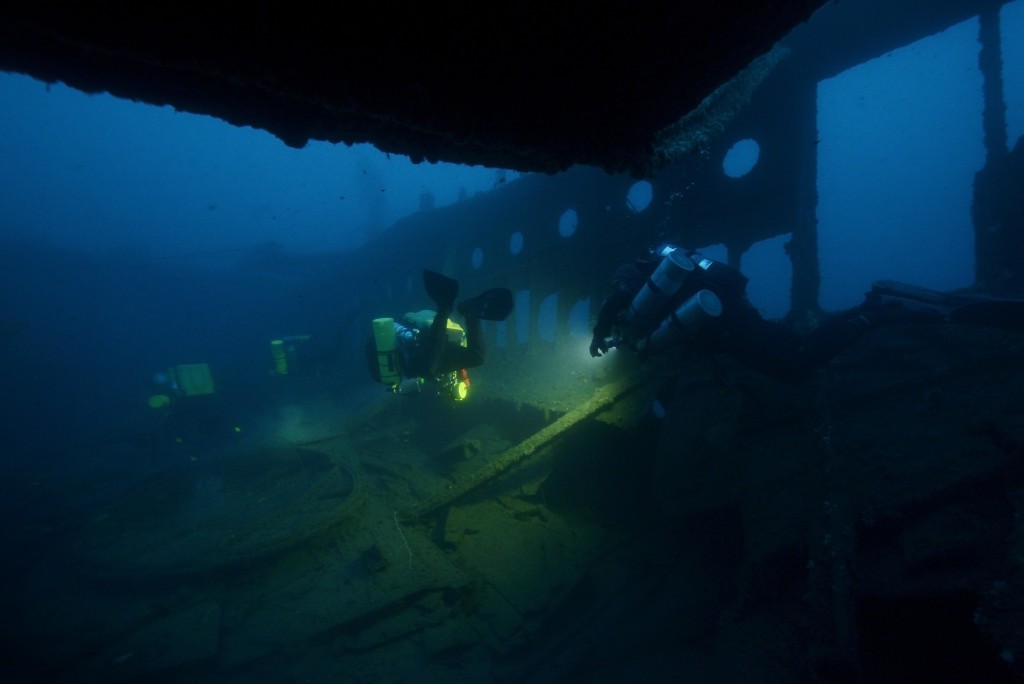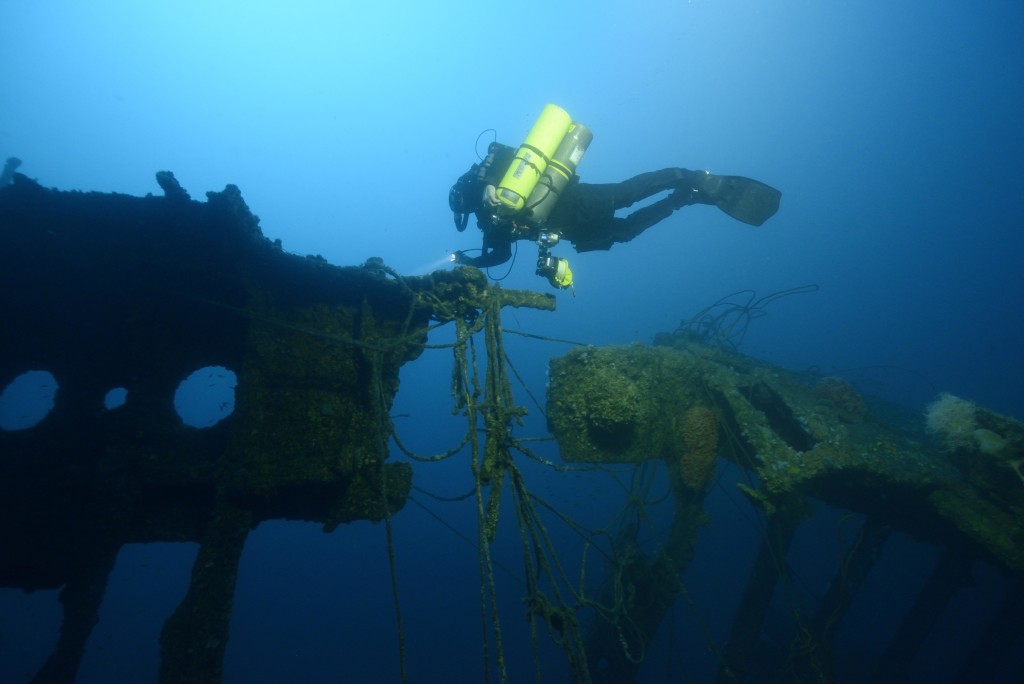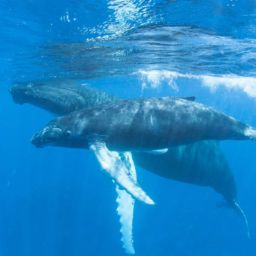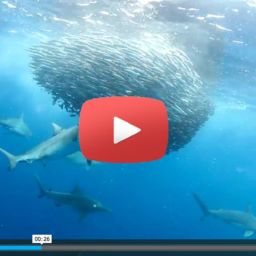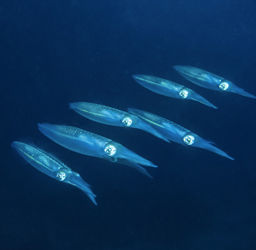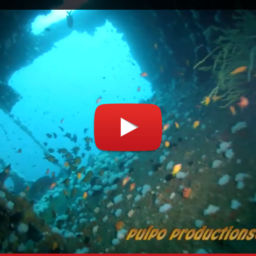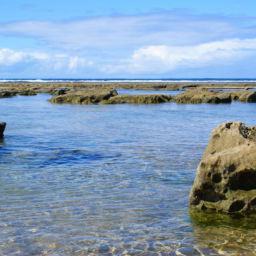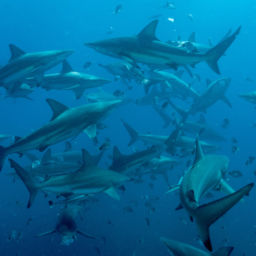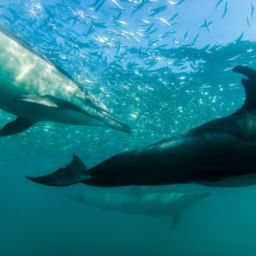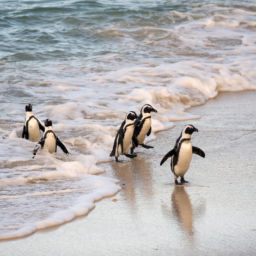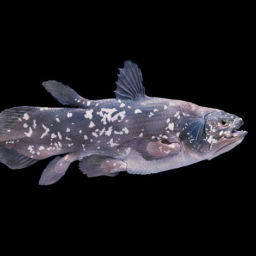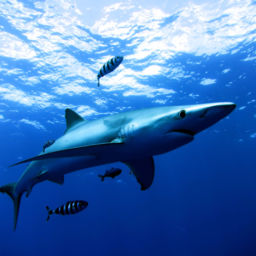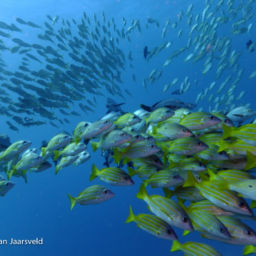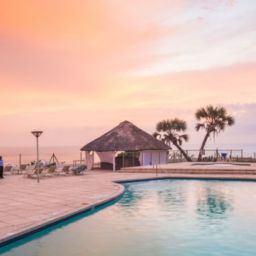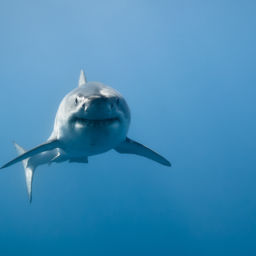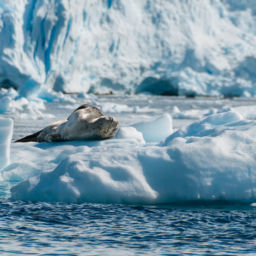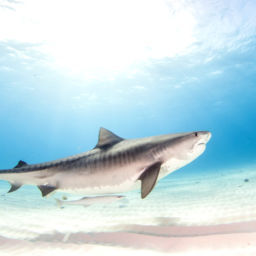Durban’s port, on South Africa’s east coast, dates back to the early 1800s and is now one of the busiest in Africa. The earliest recorded shipwreck in Durban waters is that of the Good Hope, which ran aground off The Bluff in 1685. Today, there are 141-recorded shipwrecks in the vicinity of the port, many of which have yet to be found and identified. Since 2012, PADI Course Director and experienced tech diver Patrick Voorma has taken on the task of rediscovering Durban’s ghost fleet. Voorma owns Calypso Dive Centre, based at uShaka Marine World, and this is the story of his fascination with resurrecting Durban’s maritime past.
The Namaqua
Like all good stories, Voorma’s started quite by accident. One day while searching for a new reef for his tech students to explore, Patrick happened to glance at the dive-boat’s fish finder just as the depth recorded there changed inexplicably from 198 feet (60m) to 178 feet (54m). The profile displayed on the fish finder showed an anomaly on the seafloor that resembled the outline of a wreck, and so, the next day, Voorma and his support diver Bradley Wright returned sufficiently equipped to investigate further. After reaching 100 feet (30m), the visibility dropped off dramatically until it was almost at zero. Keeping a firm hold on the anchor line, Voorma continued to descend until he reached the seafloor, where he could see nothing at all except for the silt directly in front of his mask.
Realizing that the search was impossible in such conditions, he turned to begin his ascent, which was when his fins collided with something solid. Upon closer inspection, he discovered that he had unwittingly dropped almost directly onto the wreck. It was then, on October 5th, 2012, that Voorma experienced for the first time the thrill of discovering a shipwreck. It took several more dives to the wreck site and many months of research to identify the vessel as the Namaqua, or the Umzimvubu as it had been known in a previous incarnation. Initially built as a coaster for transporting sugar cane, the Umzimvubu was mentioned in the memoirs of Sir Winston Churchill, who sailed from Durban to East London onboard this ship after escaping from imprisonment in Natal during the Boer War.
The Namaqua sank on November 12th, 1932, and Voorma’s rediscovery of it some 80 years later was for him the beginning of an all-consuming obsession.
The Search
After the chance discovery of the Namaqua, Voorma began searching for the rest of Durban’s infamous ghost fleet in earnest. He knew that the best source of information regarding possible wreck sites was the local fishing community. Because deep wrecks provide a natural home for commercially viable species like the Cape salmon, fishermen in South Africa look for these sites every time they go to sea. For them, wreck sites are like gold mines, and as such, their coordinates are jealously guarded. At first, Voorma struggled to convince the fishermen that he only wanted their marks in order to dive the wrecks. As he got to know them — and with the aid of considerable quantities of Captain Morgan’s rum — he eventually earned their trust, and their coordinates.
After loading these onto a GPS, Voorma discovered that the majority of the potential wreck sites lay between 198 feet (60m) and 445 feet (135m). The only way that they could be accessible to divers was through the use of trimix, a technical diver’s blend of helium, oxygen and nitrogen. At the time, a student named Allan Maclean signed up to do a PADI trimix course through Calypso, and together, he and Voorma decided to use his training dives to explore the coordinates provided by the fishermen. The Calypso team spent many fruitless hours searching for the wrecks, often thwarted by careless or inaccurate marks that led them instead to patches of bare sand. However, towards the end of 2012, the team found their second wreck, thought to be that of a commercial vessel, the Sir Gordon.
HMS Otus
Since October 2012, Patrick and a team of tech divers and support divers from Calypso have successfully found six wrecks in the Durban area. One of these was the fishing vessel Cape Columbine, which sank in 1980 and was found by the Calypso team on January 24th, 2014 in 214 feet (65m) of water. Another was the Istar, which ended its life as a shark-fishing vessel but served for a brief period during World War I as a submarine chaser under the name USS Nahma. The Istar sank in March, 1931, and was discovered at 247 feet (75m) by Voorma and his team on February 13th, 2014. One wreck stands out amongst Calypso’s discoveries, however, both for its uniqueness and for the incredible depth at which it was found, that of a Royal Navy submarine, the HMS Otus.
Some years previously, a fellow wreck enthusiast named Stuart Donkin told Voorma that the HMS Otus had been scuttled off the coast of Durban soon after the end of World War II. Donkin had been searching for the vessel for some years, but eventually concluded that it must be at a depth that exceeded the limits of recreational divers. He turned to Voorma, as Durban’s authority on tech diving, for help. Voorma contacted the British Maritime Museum in an attempt to find an accurate record of the exact location in which the submarine had gone down, but to no avail. In fact, there seemed to be no record anywhere of the deliberate scuttling of HMS Otus, other than that it had happened near Durban in September 1946. Around this time, Allen Maclean’s training had progressed to the point where he was ready to attempt his first dive to 330 feet (100m). Voorma selected one of the possible wreck sites from his list of coordinates for the dive, choosing a mark that lay at 346 feet (105m).
On the day of the dive, March 20th, 2013, the current was too strong to allow an anchor line to be safely deployed on the wreck, so the two men decided to abandon the idea of finding the wreck, choosing instead to make a free descent to the goal depth of 330 feet (100m). They dropped into the water 2,640 feet (800m) up current from the wreck site, and reached the seafloor in exactly four minutes. Visibility on that day was exceptional at almost 165 feet (50m), and after Maclean and Voorma completed their safety, checks they soon saw a shape materializing out of the gloom ahead of them. Within minutes, the current had swept them onto the wreck, which was unmistakably the HMS Otus. Since then, Voorma and the divers at Calypso have revisited the HMS Otus several more times; it has become a very special wreck to the entire team, and the flagship of their wreck-discovery project.
The Search Continues
Currently, Calypso has 14 more potential wreck sites to explore between the depths of 198 and 445 feet (60 to 135m). Voorma is always looking for suitably certified tech divers or support divers to help him on his mission to rediscover Durban’s ghost fleet. He has this to say of his experiences so far:
“The quest for shipwrecks off Durban has not always been an easy task and there are many times that we dive and find nothing but sand, a ladder or a pile of junk,” he says. “At times we face strong currents, bad visibility and considerable time and distance from the shore. But on those days that it all comes together, there is nothing that can beat a dive on a virgin wreck.”
Check out Calypso and the quest for Durban’s ghost fleet here.


